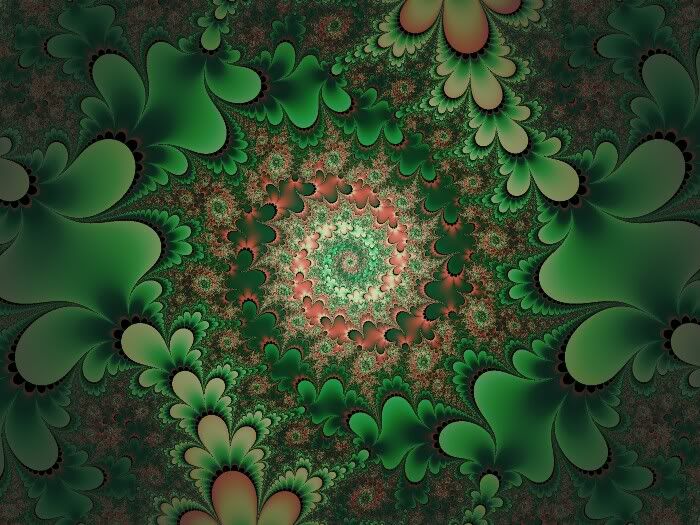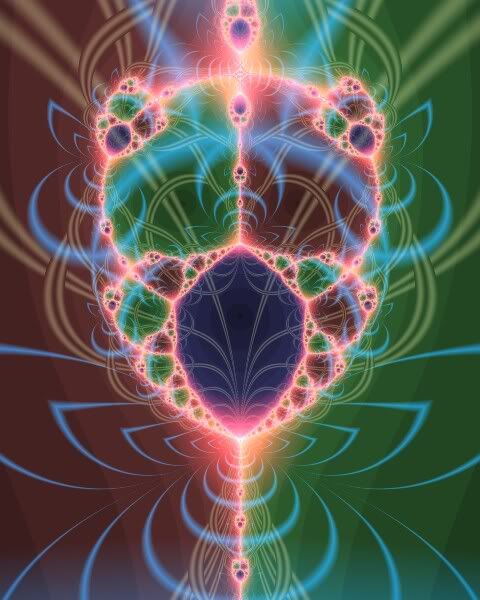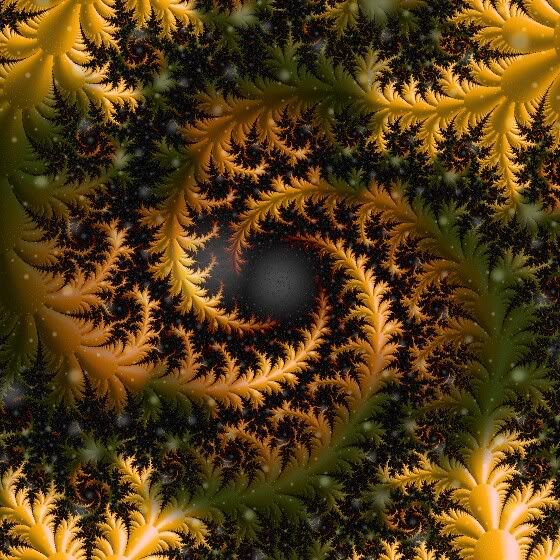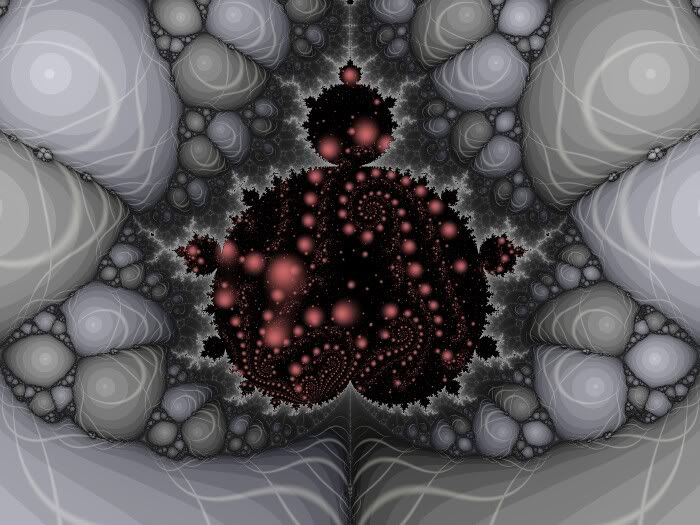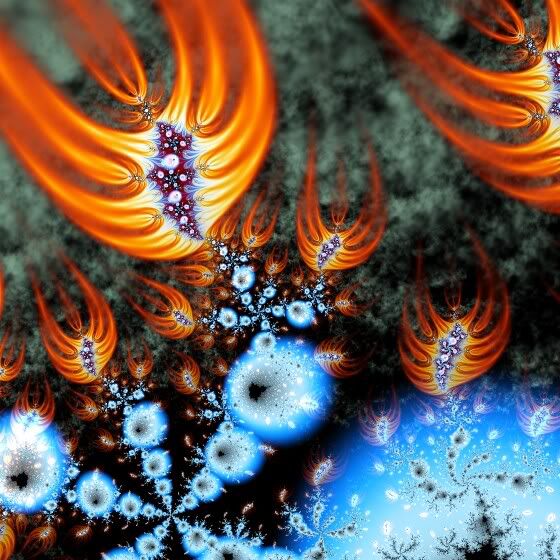sunnycat wrote:
Spectacular! And all this beauty out of one mathematical formula? Awesome possum! How do you make the mathematical formulae?
I'll try and explain a little about one of the most famous fractal sets; the Mandlebrot set.
The basic starting point is the family of quadratic polynomials:
f_c:
C -->
C
z --> z^2 + c
with parameter c where c is in
C.
The Mandlebrot set is then the subset of the complex plane: {c \in
C: lim sup_{n in N} |f^n_c (0)| \in
C}
that is the set of values of the parameter c such that the sequence a_n = f^n_c(0) is convergent.
So that gives you the set but it doesn't tell you how to make the pictures.
The simplest way is to make a plot in the argand diagram (complex plane) colouring a point if it is in the set and leaving it blank otherwise. Of course, it isn't always practical on a computer to check for definite whether a point is in the set or not so various algorithms are used. One simple way is just to keep iterating the function until its modulus exceeds 2. If it doesn't exceed two you let it run for a chosen finite number of iterations and then you can say that if the finite number of iterations is high enough; it is likely that the point is in the set. If you want to make a fancy colourful version of the set, you choose a different colour to correspond to a certain number of iterations and colour points according to how many iterations they take to get over modulus 2.
Of course, there are much simpler fractals that are easier to explain but I know when people use the term in general usage they are really referring to the pretty pictures!







